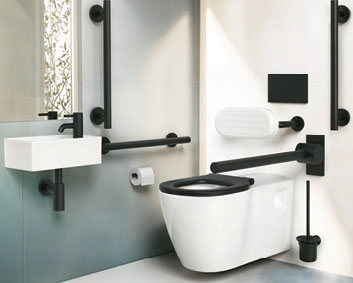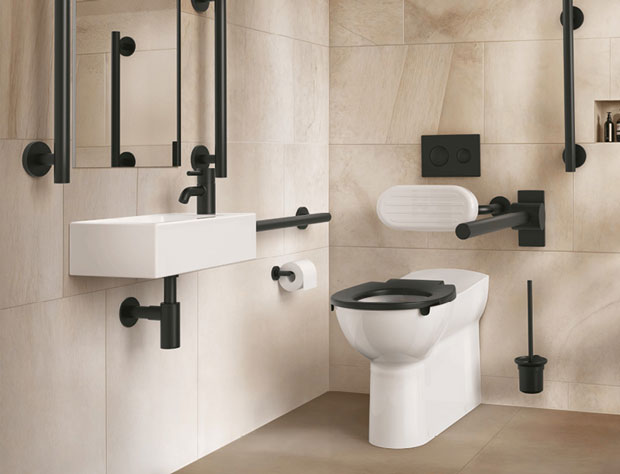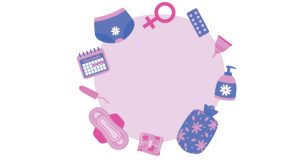 Anil Madan, Non-Residential Marketing Manager at Ideal Standard UK and Armitage Shanks on the evolving aesthetic of accessible washrooms
Anil Madan, Non-Residential Marketing Manager at Ideal Standard UK and Armitage Shanks on the evolving aesthetic of accessible washrooms
Accessibility should be the top priority when designing, specifying, and managing commercial washrooms, but achieving compliance doesn’t mean having to sacrifice on style. Traditionally, specifiers, hoteliers and facilities managers have focused primarily on function in accessible washrooms, often resulting in spaces that contrast starkly with other communal spaces.
This is not without reason; the Equalities Act of 2010 makes accessible design a legal requirement for commercial washrooms. This responsibility extends beyond the equalities act, with Building Regulations Approved Document M (Doc M) setting the standard for accessibility in all buildings within England, and BS8300 part 2 defining the best practices for designing an accessible and inclusive environment across the whole of the UK.
However, a shift is underway as FMs, and specifiers look to bring wider design trends into inclusive spaces to create washrooms that maintain aesthetics for all users.
THE INFLUENCE OF WIDER DESIGN TRENDS
Accessible design has evolved from being a ‘nice-to-have’ feature to a key consideration for both designers and facilities managers, driven by the growing influence of commercial and residential interior design trends.
Coloured finishes on grab rails, seats, and brassware are just a few examples of how accessible products are becoming more visually appealing, while greater thought is being given to the aesthetics of ceramics. But FMs and specifiers have more to do than just consider aesthetics when it comes to choosing colours. The finishes of grab rails and toilet seats in accessible washrooms need to serve a key purpose; providing sufficient visual contrast against walls, doors and other surfaces so that people with impaired vision can see them easily.
There’s no room for compromise in the name of design, and any coloured finish however aesthetically pleasing it may be, needs to align with its core, functional, purpose. For example, FMs and specifiers should look for coloured finishes on grab rails and toilet seats that work in harmony with the Light Reflect Values best practice standards which are laid down in Doc M and British Standard BS8300-2:2018.
The rise of sensor-driven technology, such as mixer taps and automatic flush systems, is now extending into accessible washrooms. Here, FMs and specifiers again need to ensure compliance with Regulation 4 (Water Supply Regulations 1999) and Document M standards. These mixers not only enhance hygiene but also contribute to a sleek, streamlined look, which is appealing to all users.
However, it’s important for specifiers – whether designers or FMs – to carefully consider the selection of accessible washroom products, and aesthetics should not come at the cost of durability, which is critical for high-traffic washrooms. Where possible, ensure products comply with the best practice outlined in BS8300-2:2028 to guarantee the highest standards in accessible washroom design.
This means selecting products made from materials that are both lightweight and tough, such as aluminium grab rails that can withstand repeated use and continue to meet key criteria such as load weights with that use. The durability of finishes should also be a consideration, especially in high traffic areas to maintain the design of a space and reduce the need for maintenance and refits.
RISING TO THE CHALLENGE
Manufacturers are leading the way in bridging the gap between accessibility and aesthetics. By expanding their portfolios, they provide specifiers with solutions that meet regulatory standards without compromising on design.
Armitage Shanks’ new Silk Black Doc M Packs are a testament to this shift. Offering a stylish alternative to traditional white or stainless-steel grab rails and accessories, these packs allow for a contemporary yet compliant washroom design.
This market is an area that’s only growing too, with more and more manufacturers diversifying their product ranges to move design-led products into the accessible washroom space.
LEANING INTO SUSTAINABILITY
 Sustainability is another key driver influencing modern accessible washroom design. With growing environmental awareness, specifiers are prioritising products that are not only aesthetically appealing but also environmentally responsible. Recycled and low-carbon materials are being incorporated into washroom solutions, ensuring compliance with green building certifications while maintaining style and durability.
Sustainability is another key driver influencing modern accessible washroom design. With growing environmental awareness, specifiers are prioritising products that are not only aesthetically appealing but also environmentally responsible. Recycled and low-carbon materials are being incorporated into washroom solutions, ensuring compliance with green building certifications while maintaining style and durability.
With specifiers and FMs increasingly looking to incorporate these wider design trends into accessible washrooms, products that offer a variety of finishes and configurations while aligning with sustainability goals are gold dust to maintaining consistency across washroom spaces.
A COLLABORATIVE FUTURE
As the demand for aesthetically pleasing and accessible washrooms continues to grow, the industry is adapting to ensure compliance does not come at the expense of style. FMs, designers, and manufacturers are working together to push boundaries and challenge outdated perceptions of accessible washrooms. Through innovative products and forward-thinking design principles, it is now possible to create commercial washrooms that are inclusive, stylish, and reflective of the latest design trends.
The future of accessible washroom design is clear: inclusivity and aesthetics are no longer mutually exclusive, and the industry is embracing this change for the better.





